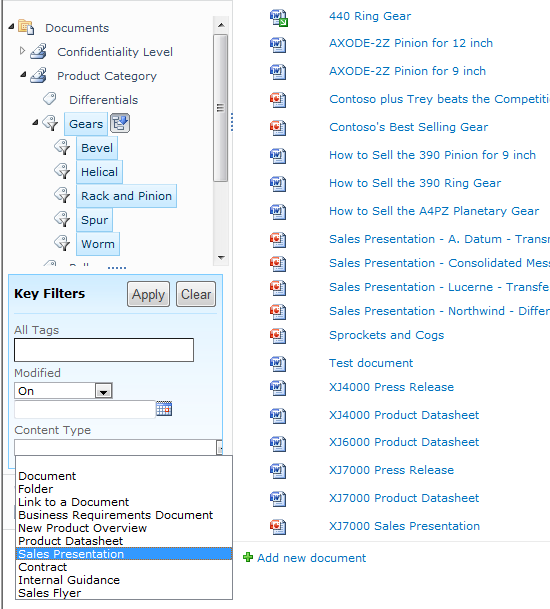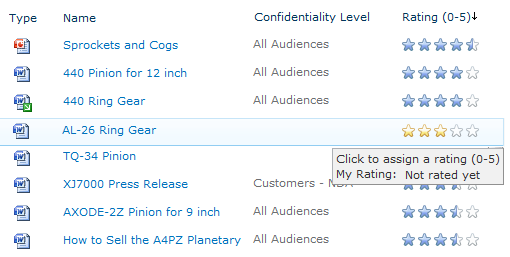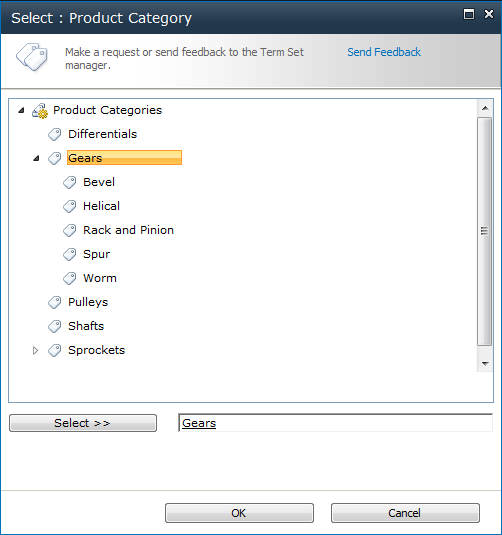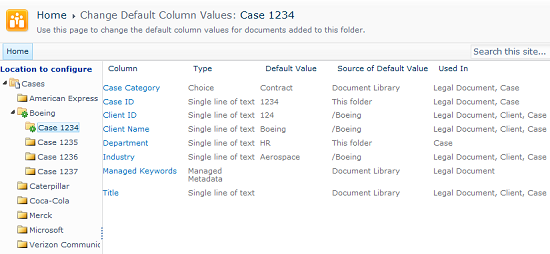10 Ways SharePoint 2010 Improves Findability
Editor’s Note: In a new series of articles, I will be introducing you to some of the speakers who will be presenting at the SharePoint Evolutions Conference in London next week, pointing you to articles on their sites, offering downloads of white papers, and publishing articles on their subjects of expertise. — Mark Miller
 Guest Author: Ari Bakker
Guest Author: Ari Bakker
Findability is one of the most important factors in the success of a SharePoint site. If users cannot find what they are looking they will quickly use alternate methods to get results. Employees that cannot find information are less productive and less likely to use the system in general. Likewise users that cannot find information on an internet site will look elsewhere for products and services losing the company revenue.
SharePoint 2007 introduced some powerful tools for improving findability but fell short when it compared to larger Enterprise Content Management systems. SharePoint 2010 takes this a huge step forward with cutting edge enterprise ready findability features. Here are 10 new features SharePoint 2010 brings to the table in addition to the features available in SharePoint 2007.
- Metadata driven navigation
- Search enhancements
- Ratings
- Tagging
- Document IDs
- Managed metadata service
- Shared content types
- Location based metadata defaults
- Content Organiser
- Document Sets
SharePoint 2010 provides a rich set of features that allow users to use metadata to navigate content repositories. Document libraries can be configured to show navigation based on both the corporate taxonomy (or managed metadata) and combined with other metadata filters. For example with a you can filter items from the ‘Gears’ product category of content type ‘Sales presentation’ using the navigation as shown below.

SharePoint 2010 includes some impressive enhancements to the search experience. Search facets allow users to filter the results by relevant metadata such as author or content type. Relevancy is improved as it takes the number of views into account. These features, along with the addition of related queries, improved query syntax and thumbnail previews can help users locate the content they are after.
The introduction of a ratings field allows community driven content classification. Ratings can be used to improve findability through sortable list columns, or by the creation of ‘highest rated documents’ rollups using the Content Query Web Part, allowing users to see popular content in prominent places.

SharePoint 2010 includes a tag cloud web part that provides a visual representation of the metadata associated with the content inside a repository. Additionally tag profile pages contain lists of items such as sites, documents or people tagged with a particular term as well as a list of community members and discussions, facilitating information retrieval.
SharePoint 2010 provides a unique Document ID service that can be used to create absolute references to content regardless of file renames or content moves. As well as resulting in a reduction in broken links the Document ID can be used to search for an individual document and the format of the ID is configurable allowing organisations to create meaningful document identifiers.

All the findability improvements mentioned above rely on the correct classification of content in the first place. The following five finability improvements aid the correct classification and organisation of content SharePoint 2010.
SharePoint 2010 now includes a dedicated service for managing metadata within the enterprise. The managed metadata service allows content owners to maintain a centrally managed structured taxonomy as well as allowing users to contribute to an unstructured folksonomy in the form of managed keywords. This makes it much easier for users to classify content, and guides users to use consistent terms, improving the quality of metadata in the system.
Structured classification:

Unstructured classification:

One key architectural limitation in SharePoint 2007 was that Content Types could not be shared between site collections. This resulted in the duplication of content types and associated lookup lists which could become out of sync over time. SharePoint 2010 removes this limitation and thus improves the consistency of information stored in different site collections or even separate SharePoint farms.
SharePoint 2010 allows you to set metadata defaults at the document library and folder level. This means that users do not have to enter the same metadata over and over if they are uploading content into a repository that has a shared set of metadata.

In SharePoint 2007 the location in which content was stored was largely up to the end users. The Content Organiser in SharePoint 2010 helps alleviate problems caused by users uploading documents to a variety of different places by allowing routing decisions to be centrally managed. Content can then be routed to the correct location based on the content type and other metadata values. This helps the user to focus on providing quality metadata and results in a well organised repository.
A document set allows you to manage a group of documents as a single entity. The ability to apply metadata to the entire set of documents improves consistency and storing related documents together can help users find relevant material easily.
Summary
SharePoint 2010 delivers some massive platform improvements that help in the classification and retrieval of content. It is important to note, however, that the toolset is only a small part of an information management strategy. Information management should start with clear business objectives, a clear strategy and appropriate focus areas before technology is involved. Once this is in place, however, the significant advancements of SharePoint 2010 make it a more obvious technology choice for content management that ever before.
 Guest Author: Ari Bakker
Guest Author: Ari Bakker
Ari Bakker is a SharePoint focused Technical Lead at London-based digital agency cScape. He is an active member of the SharePoint community and has spoken at SharePoint user group events in New Zealand and Australia. Ari will be presenting on “creating a metadata driven information architecture using SharePoint 2007” at the SharePoint Evolution Conference in London next week.
Ari blogs regularly at http://www.sharepointconfig.com and tweets via @aribakker.
- Bob Fox at SharePoint Evolutions Conference 2010
- Referencing Javascript Files with SharePoint 2010 Custom Actions using SciptSrc
- Ian Woodgate at SharePoint Evolutions Conference 2010
- 10 Ways SharePoint 2010 Improves Findability

